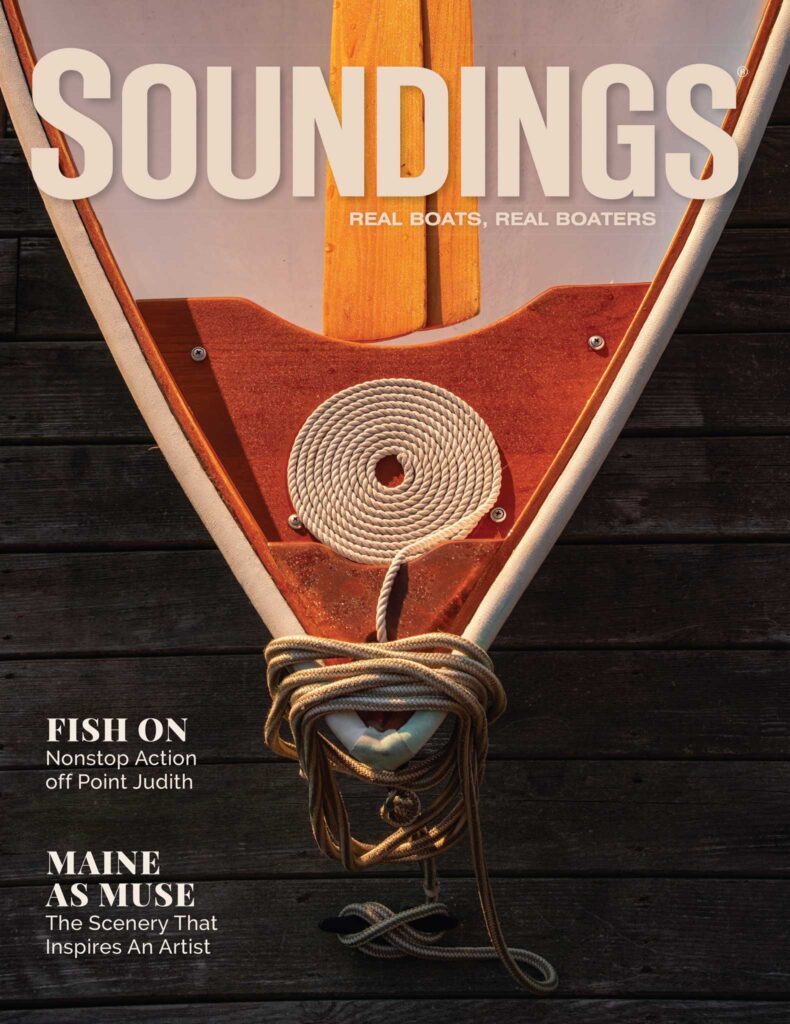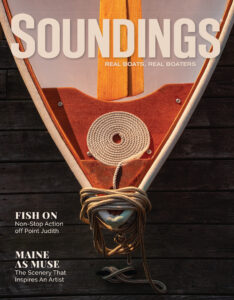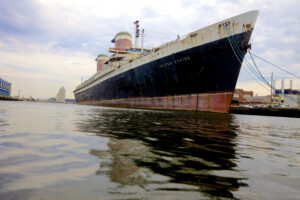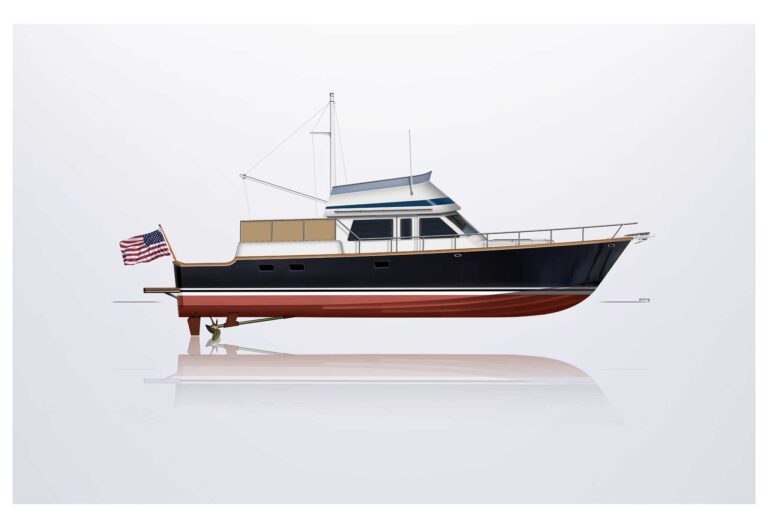Drag boat racer’s injuries after flipping his boat during competition lead him to hang it up for good
Drag boat racer’s injuries after flipping his boat during competition lead him to hang it up for good
A drag boat champion has called it quits after suffering serious injuries when his outboard-powered 19-footer flipped at 105 mph during a race.
“I’m done racing — I’m done,” says Joe Peroceschi, 49, of Muskego, Wis., lying in traction in a St. Louis hospital. “I’ll be recovering from six months to a year.”
Peroceschi shattered his left hip and fractured his pelvis in four places as he catapulted from the boat in the Budweiser Drag Boat Nationals on WappapelloLake in southeast Missouri in May. “I hit my hip on the steering column,” he says. “I bent the steering column 90 degrees.”
Race announcer Roger Monroe says the wind caught the bow of the lightweight three-sponson hull. The vessel flipped backward end over end, completing one full revolution before a sponson caught the water. The boat landed in the water upside down.
“Joe was fortunate that he was a good 150 to 250 feet away from the boat,” says Monroe, who has seen dozens of accidents and several deaths in his 29 years of calling races. He says Peroceschi bounced on the water about three times after being cannonballed out of his helm seat. “He did a pretty good cartwheel,” he says. (A photographer captured an image of Peroceschi in that act as he appears to be walking on water.) Several thousand race fans along the beach were watching, says Monroe. “You could hear everyone gasp when Joe went over.”
Peroceschi, a tool and die maker, also suffered four broken ribs and three cracked vertebra. He doesn’t remember much, only waking up in the water with paramedics around him. “I remember thinking, I didn’t drown; that’s good,” says Peroceschi, who has a wife, Cindy, of 27 years, and 16-year-old triplet girls. “I was in a lot of pain.”
Peroceschi has captured six national championships in his 20 years of drag boat racing and says he was ranked second overall last year in his division in the St. Louis Drag Boat Association. He also runs in the Southern Drag Boat Association and the International Hot Boat Association. In 2001, another driver dubbed him “Smokin’ Joe” because of his success in that year’s races. His raceboat also goes by that name.
Peroceschi had just lightened his boat by around 100 pounds, shortening the engine shaft, removing the engine’s trim/tilt pump, using smaller batteries, and replacing the fuel tank’s metal straps with nylon ones. “It was my second race [with the lighter boat],” he says. “I was still trying to dial it in. The wind just got me, and that was it.”
Racing conditions weren’t that bad, says Peroceschi, with wind speeds to 10 mph, though gusting to 20 mph. Peroceschi’s boat — a Quarter Shot T3 built by Full Throttle Powerboats, of Jacksonville, Fla. — weighs 485 pounds (dry). Its biaxial fiberglass sandwiches a balsa core, and the low-cut deck reduces drag. “The boat rides on the center sponson [at the stern], and the other sponsons sort of act like training wheels,” says Jack Barsh, owner of Full Throttle Powerboats (www.fullthrottle powerboats.com).
A 360-hp 2004 Mercury Racing outboard powered Peroceschi’s three-person boat, which has a center helm seat and an aft bench seat. Full Throttle also builds boats with enclosed helms, and these are known as capsule boats. “Joe would have been better off in a capsule boat,” says Barsh. “It’s personal preference to have the open cockpit or the capsule.”
Peroceschi opted for an open boat because he also used the Quarter Shot, with its passenger seating, for water skiing. In addition, he disliked the possibility of getting trapped inside a capsule boat if it were to flip during a race.
The hull suffered minor damage — only a broken windshield and a damaged aft hatch. Barsh says he will make those repairs because he knows Peroceschi will likely sell the boat. He paid $15,000 for it with a trailer and mounted an outboard he already owned. (A new Quarter Shot T3 with a 2.5-liter Mercury Racing outboard and trailer is about $38,000, says Barsh.)
Although he lost his helmet as he was launched from the vessel, Peroceschi says his safety equipment — including a head-and-neck support called the Hans Device, ballistic shorts and a fiberglass backboard — prevented further injuries. The accident occurred about halfway through the quarter-mile race. Peroceschi was leading Poppa’s Toy, driven by Rick Conklin, of Ottawa, Ill.
“I think I would have won,” says Peroceschi. “I was in the lead. Plus, he was running nitrous oxide and blew the engine.” (Some drivers have nitrous oxide-injected engines for rocket-like bursts of speed.)
Peroceschi has quit racing, but will continue boating with his 20-foot HydroStream Venom powered by a 375-hp Mercury. He also plans to continue water skiing and driving a personal watercraft when he regains enough strength.
It pains Peroceschi’s wife, Cindy, 48, to see him so banged up, and she is relieved his racing career is over. “I’m glad that it came to an end,” she says. “It’s been 20 years of holding my breath. There have been too many close calls lately. I hate to say it, but [an accident] was inevitable.”
Last year, WappapelloLake was the site of another drag boat wreck, says Fred Welshans, president of the St. Louis Drag Boat Association. In that one, however, the driver escaped without injury, but the boat was totaled and the engine wound up at the bottom.
Welshans makes the decision whether to call off a race because of weather. He says conditions were fine on the day of Peroceschi’s accident, with more than 50 other boats racing without incident. “Joe got the boat up too high, and Mother Nature took over,” he says. “It takes guts to do what we do. These guys run on the ragged edge.”
Welshans says last year’s crash contributed to this year’s high attendance. “I said to Joe, ‘On the positive side, at least people will come back next year,’ ” he says. “[Fans] don’t like to see people get hurt, but they don’t mind the wrecks.”










